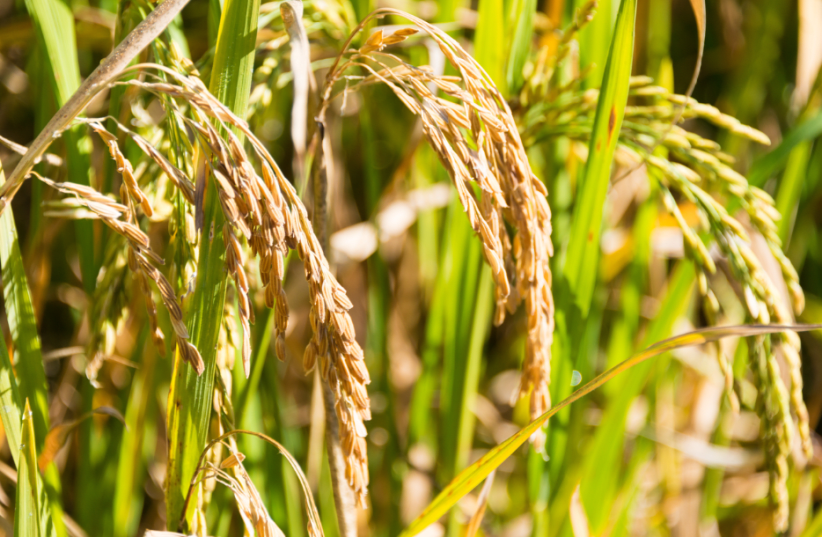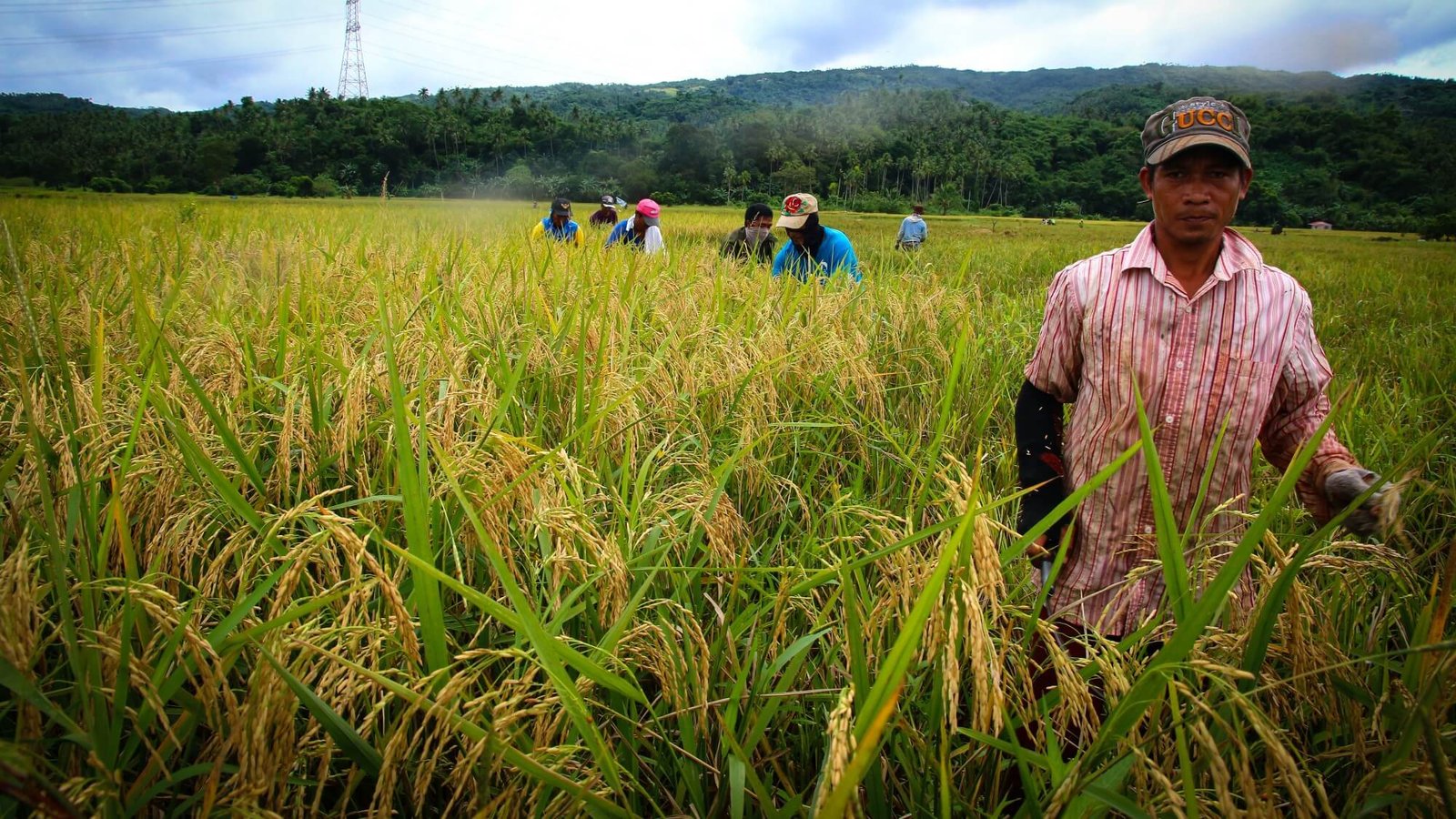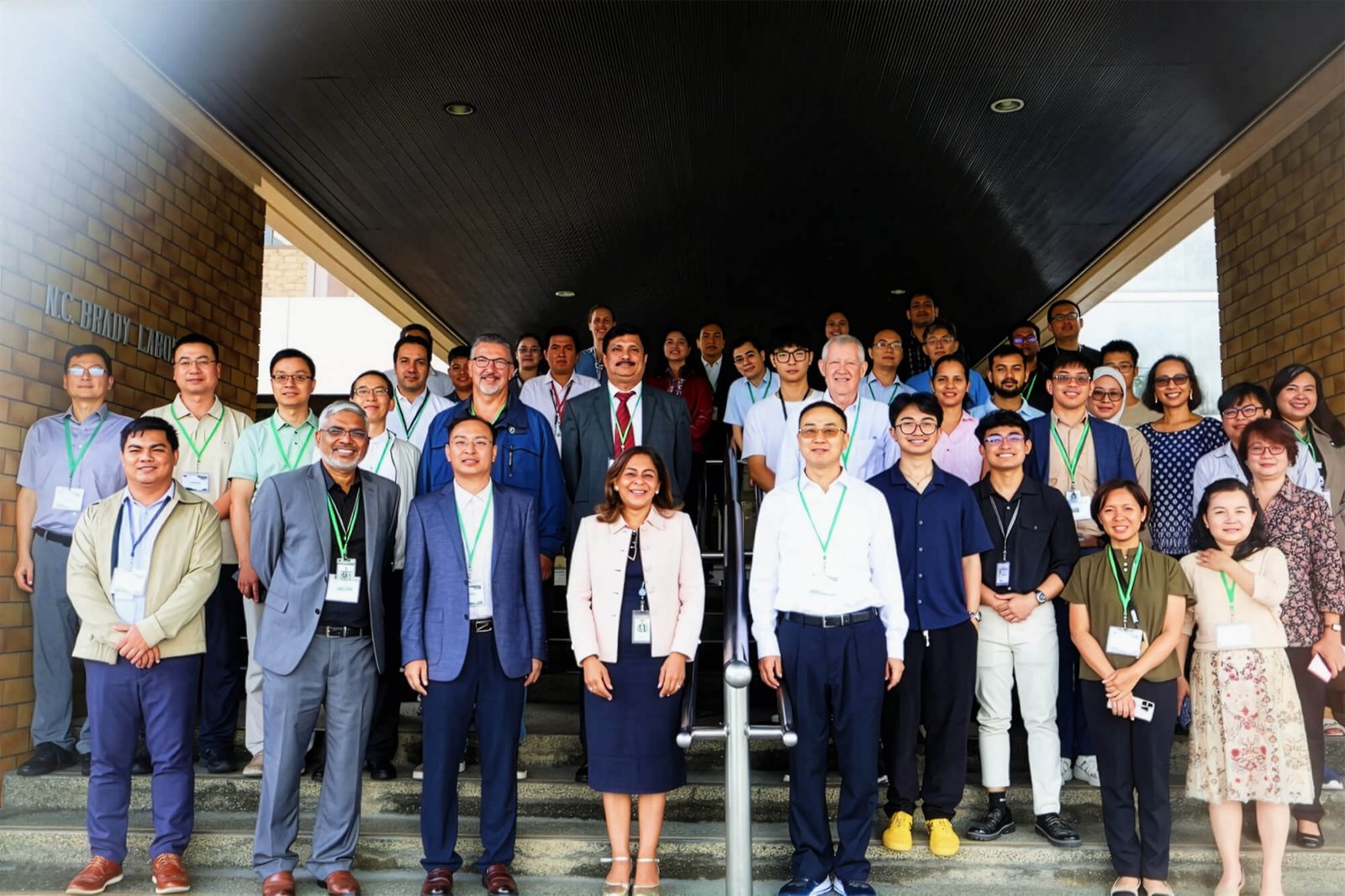Tags
Scientists designed a hybrid type of rice to reduce methane emissions.
This hybrid rice represents a significant advancement towards sustainable agriculture, as rice cultivation contributes to about 12% of human-made methane emissions.
By JERUSALEM POST STAFF.

(photo credit: beibaoke. Via Shutterstock).
Researchers in China successfully grew a new low-methane hybrid rice variety across multiple locations, with additional tests conducted in the fall of 2022 at two other sites, 300 kilometers apart, as reported by Scientias. This rice, known as SUSIBA2, demonstrated an ability to reduce methane emissions by up to 70% during cultivation while maintaining high yields.
The cultivation of rice, a staple food for half the world’s population, is responsible for around 12% of man-made global methane emissions, making it a contributor alongside livestock. Methane is a potent greenhouse gas far more effective than carbon dioxide, with a warming effect 25 times stronger and responsible for about one-third of human-caused warming since the pre-industrial era.
A team of agronomists from universities in Hunan and Zhejiang provinces in China, along with researchers from the Uppsala BioCenter at the Swedish University of Agricultural Sciences, sought to breed a rice cultivar with high yields and low methane emissions. They crossbred a high-yield rice variety with the Heijing cultivar, a low-methane-emitting variety, to create SUSIBA2, which has a reduced environmental impact, according to Phys.org.
A two-year field trial in China demonstrated that the new strain emitted 70% less methane than the variety it was bred from, while yielding an average of 8.96 tons per hectare. This yield is higher than the 2024 global average of 4.71 tons per hectare, making SUSIBA2 one of the higher-yielding cultivars, as reported by the Good News Network.
The researchers uncovered that chemical compounds released from rice roots—including fumarate, oxalate, and ethanol—influence methane emissions. These compounds feed soil microbes that break down the chemicals, producing methane in the process, according to Phys.org. They found that the roots of SUSIBA2 produce less fumarate than Nipponbare, a non-GMO cultivar with average emissions. Fumarate is known to be a key driver of methane emissions.
“Fumarate and ethanol are two major rice-orchestrated secretions and play a key role in regulating methane emissions,” the team wrote in a paper published in the peer-reviewed journal Molecular Plant, according to the Bangkok Post. The study revealed a correlation between the amount of fumarate excreted and the abundance of methane-emitting methanogens in the surrounding soil.
The researchers added fumarate to the soil of rice plants grown in pots, which increased methane emissions from the plants. Conversely, adding ethanol to the soil around the rice plants reduced methane emissions. They also demonstrated that administering oxantel, a chemical that inhibits the breakdown of fumarate, reduced methane emissions. The treatment with ethanol and oxantel cut emissions by 60% without affecting yields, reported the Bangkok Post.
The team observed that the less methane-emitting plants excreted more ethanol, indicating its role in reducing emissions.
Anna Schnürer, a microbiologist at the Uppsala BioCenter, emphasized the significance of these findings. “This study shows that you can have low methane and still have a rice with high yields. And you can do it using traditional breeding methods, without GMO, if you know what you’re looking for,” she said.
The researchers are currently working to register the LFHE (Low Fumarate High Ethanol) rice as a variety with the Chinese government, aiming to make it available to farmers. “It’s one thing to breed environmentally friendly rice varieties, but then it’s crucial to get them to market and ensure that farmers accept them,” said Schnürer, emphasizing the importance of market acceptance.
As global populations continue to surge and demand for rice increases, finding sustainable agricultural solutions becomes crucial. Reducing methane emissions from rice cultivation presents an opportunity to mitigate environmental impact. The new low-methane hybrid rice offers a strategy to address a future rise in rice-related emissions due to global warming and an increasing global population.
Methane emissions from rice paddies occur when microbes break down organic compounds released by rice roots. Rice plant roots release organic substances that feed soil microbes, aiding plant growth by releasing nutrients that the plants can absorb. Understanding and manipulating these root exudates have been key to developing the low-methane rice variety.
Breeding a new rice variety with high yields and low methane emissions could reduce greenhouse gas emissions from rice cultivation, a major source of methane. “The researchers have aimed to reduce methane emissions from rice fields, which are significant. Methane is an extremely potent greenhouse gas,” said Professor and Section Leader Henrik Brinch-Pedersen from the Department of Agroecology at Aarhus University, according to Videnskab.
https://www.jpost.com/science/science-around-the-world/article-840942Published Date: February 7, 2025






